TESTING & ANALYSIS
TEST, MEASUREMENT & EVALUATION
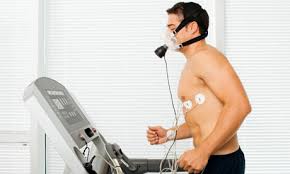 It is very important that proper standards are set to assess the skill & potential before the selection of the sportspersons and their further training. Skill is the ability to coordinate different muscles of the body in order to perform a combination of specific movements effectively. In other words, the automatic application of technique without conscious thought is skill. In Kabaddi, which is played without any equipment, the sportsman is required to master a number of skills with their variations to make a successful team member. Skill is derived from the term technique which in turn is defined as the motor procedure for tackling a given task.
It is very important that proper standards are set to assess the skill & potential before the selection of the sportspersons and their further training. Skill is the ability to coordinate different muscles of the body in order to perform a combination of specific movements effectively. In other words, the automatic application of technique without conscious thought is skill. In Kabaddi, which is played without any equipment, the sportsman is required to master a number of skills with their variations to make a successful team member. Skill is derived from the term technique which in turn is defined as the motor procedure for tackling a given task.
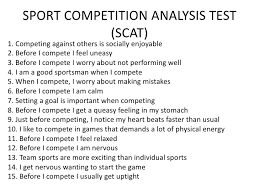 The dictionary meaning of ‘test’ is proof, trial, examination, to try out, or put to test to find quality. A test by itself is incomplete without measurements and evaluation. The terms ‘test’, ‘measurement’ & ‘evaluation’ are complementary to one another. Wile test is a means or tool to obtain the required information, measurement is the technique of evaluation and evaluation is the process of arriving at certain conclusions and judgements. Measurement is generally precise, objective and gives quantitative data that can be expressed in numerical form. Evaluation is the process that gathers data in its quantitative form through tests and measurements to arrive at certain conclusions with reference to the aims and objectives of the study. Evaluation is a continuous process for it makes value judgements that can be used as feedback mechanism and as a prescription for future use. …………
The dictionary meaning of ‘test’ is proof, trial, examination, to try out, or put to test to find quality. A test by itself is incomplete without measurements and evaluation. The terms ‘test’, ‘measurement’ & ‘evaluation’ are complementary to one another. Wile test is a means or tool to obtain the required information, measurement is the technique of evaluation and evaluation is the process of arriving at certain conclusions and judgements. Measurement is generally precise, objective and gives quantitative data that can be expressed in numerical form. Evaluation is the process that gathers data in its quantitative form through tests and measurements to arrive at certain conclusions with reference to the aims and objectives of the study. Evaluation is a continuous process for it makes value judgements that can be used as feedback mechanism and as a prescription for future use. …………
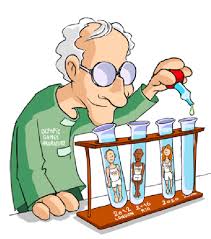
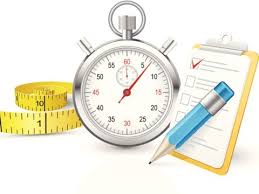
VERTICAL JUMP TEST
There are various vertical jump apparatus available for measuring explosive strength and leg power. Each has its own advantages and disadvantages:
-
Wall Mounted - The most simple method for measuring vertical jump height is against a wall. All that you need is just any plain wall and a piece of chalk in the hand to mark while jumping. There are many other wall mounted options(see the picture 1 & 2 )
-
-
Vertical - The most common apparatus used in Volleyball for measuring Vertical Jump ability is of a steel frame with horizontal vanes which can be rotated out of the line by the Hand touch to indicate the height one could reach (see the picture 3)


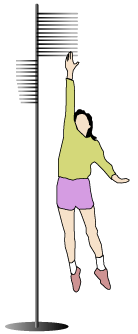
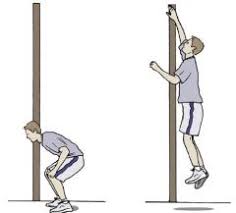
GRIP STRENGTH TEST
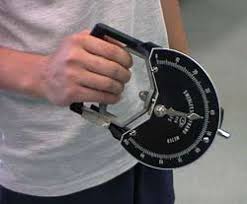
Handgrip Dynamometers are instruments for measuring the maximum isometric strength of the hand and forearm muscles, used for testing handgrip strength of athletes involved in strength training, or participants in sports in which the hands are used for catching, throwing or lifting such as Kabaddi, Wrestling, gymnasts, tennis players and rock climbers, and for tracking improvements with strength training and during rehabilitation.
There are many methods for measuring handgrip strength, and a wide range of equipment that is commercially available. The first handgrip dynamometer, the Régnier dynamometer, was invented and built by Edme Régnier (Régnier, 1807). Since then there have been many different dynamometer designs that have been used.
SIT UPS TESTS
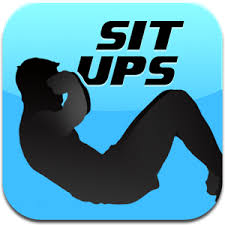 There are numerous fitness tests for measuring the function of the abdominal muscles (or 'abs' as they are called in the fitness industry). This is a very important area for testing, as abdominal strength or abdominal muscle endurance is an indicator of core strength and therefore core stability and support of the lower back. These Tests fall into two main categories, abdominal strength and abdominal endurance. In the abdominal strength tests, asssessed is the ability of the abdominal muscle to function.
There are numerous fitness tests for measuring the function of the abdominal muscles (or 'abs' as they are called in the fitness industry). This is a very important area for testing, as abdominal strength or abdominal muscle endurance is an indicator of core strength and therefore core stability and support of the lower back. These Tests fall into two main categories, abdominal strength and abdominal endurance. In the abdominal strength tests, asssessed is the ability of the abdominal muscle to function.
Sit Up endurance tests are usually conducted over a one minute period, and measure the maximum number of correctly performed situps in that time. The Army, Navy and Marines use a two minute test, and allow rest breaks in between. An alternative to the one or two minute test is a sit-up test that is continued until exhaustion at a given pace given or audio recording.

STANDING BROAD JUMP TEST
The Standing long jump, also called the Broad Jump, is a common and easy to administered test of explosive leg power. The standing long jump was also once an event at the olympic games.
variations / modifications: A long jump landing pit may be used instead of a hard surface, which enables the subject to land confidently put more effort into the jump, and to extend the legs further in front of the body for landing.
scoring: The measurement is taken from take-off line to the nearest point of contact on the landing (back of the heels). Record the longest distance jumped, the best of three attempts.
MEDICINE BALL or POWER/GYM BALL THROW
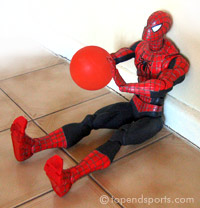
Medicine Ball or the similar Power GYM Balls are commonly used in fitness training and for testing of upper body strength and explosive power. Research has shown a good correlation between these tests and other measures of explosive power in athletes. When testing using medicine balls, it is necessary to allow familiarization trials with the technique required, including optimizing the angle of release and maximizing power output. This may require up to 5 or 6 practice trials to obtain a stable score.
SEATED BALL CHEST THROW TEST
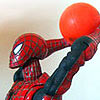
STANDING OVERHEAD BALL THROW TEST
-
aim: This test measures upper body strength and explosive power.
-
equipment required: 2-5 kg Medicine Balls depending on the age group being tested, measuring tape and marking powder.
-
procedure: The subject stands at a line with the feet side by side and slightly apart, and facing the direction to which the ball is to be thrown. The ball is held with the hands on the side and slightly behind the center.
-
The throwing action is similar to that used for a soccer/football sideline throw-in. The ball is brought back behind the head, then thrown vigorously forward as far as possible. The subject is permitted to step forward over the line after the ball is released, and is in fact encouraged to do so in maximizing the distance of the throw. Three attempts are allowed.
-
scoring: The distance from the starting position to where the ball lands is recorded. The measurement is recorded to the nearest 0.5 foot or 10 cm. The best result of three throws is used.
PULL UPS / CHIN UPS:

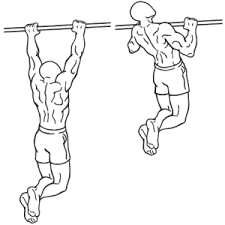
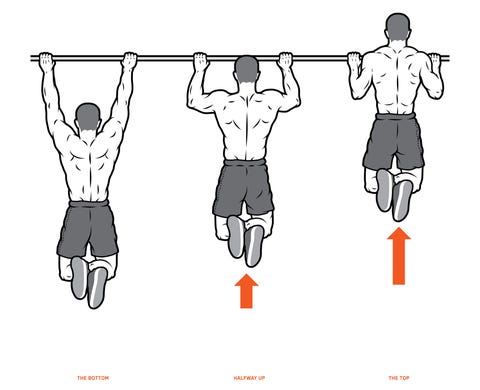
A pull-up is an upper-body compound pulling exercise. Although it can be performed with any grip, in recent years some have used pull-up performed with a palms-forward position.
The term chin-up, traditionally referring to a pull-up with the chin brought over top of a bar, was used in the 1980s to refer to a palms-away (overhand/pronated) grip, with a palms towards (underhand/supinated grip)
A "chin up" is bringing the chin up to touch the bar or go over the bar, with a supinated palms-facing grip.
Pull ups are one of the best ways to measure the upper body strength of the "pulling muscles". They are used by the United States Marine Corps as a way to determine strength among service members. Untimed, 20 pull ups in a row is a perfect score in a physical condition test for the US military, while at least 3 must be done to earn any points.
PUSH UPS / PRESS UPS
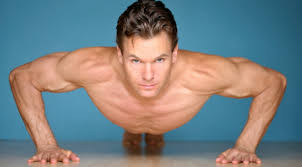
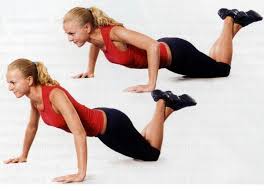 In the "full push-up", the back and legs are straight and off the floor. There are several variations besides the common push-up. These include bringing the thumbs and index fingers of both hands together (a "diamond pushup") as well as having the elbows pointed towards the knees. These variations are intended to put greater emphasis on the triceps or shoulders, rather than the chest muscles. When both hands are unbalanced or on uneven surfaces, this exercise works the body core. Raising the feet or hands onto elevated surfaces during the exercise emphasizes the upper (minor) or lower (major) pectorals, respectively. Raising the hands with the aid of push-up bars or a dumbbell allows for greater ROM (range of motion), providing further stress for the muscles. In most push-up variations, a person will be lifting about 65% of his or her body weight.
In the "full push-up", the back and legs are straight and off the floor. There are several variations besides the common push-up. These include bringing the thumbs and index fingers of both hands together (a "diamond pushup") as well as having the elbows pointed towards the knees. These variations are intended to put greater emphasis on the triceps or shoulders, rather than the chest muscles. When both hands are unbalanced or on uneven surfaces, this exercise works the body core. Raising the feet or hands onto elevated surfaces during the exercise emphasizes the upper (minor) or lower (major) pectorals, respectively. Raising the hands with the aid of push-up bars or a dumbbell allows for greater ROM (range of motion), providing further stress for the muscles. In most push-up variations, a person will be lifting about 65% of his or her body weight.
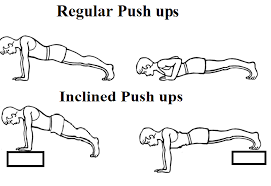

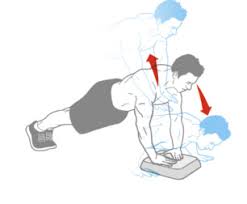
Sit and Reach Flexibility Test
The sit and reach test is a common measure of flexibility, and specifically measures the flexibility of the lower back and hamstring muscles. This test was first described by Wells and Dillon (1952) and is now widely used as a general test of flexibility. Wells, K.F. & Dillon, E.K. (1952) The sit and reach., Ref: A test of back and leg flexibility. Research Quarterly, 23. 115-118
Equipment required: A step or box and a ruler to measure the reach.
 Testing Procedure: This test involves sitting on the floor with legs stretched out straight ahead. Shoes should be removed. The soles of the feet are placed flat against the box. Both knees should be locked and pressed flat to the floor - the tester may assist by holding them down. With the palms facing downwards, and the hands on top of each other or side by side, the subject reaches forward along the measuring line as far as possible. Ensure that the hands remain at the same level, not one reaching further forward than the other. After some practice reaches, the subject reaches out and holds that position for at one-two seconds while the distance is recorded. Make sure there are no jerky movements. If a warm up is used, it is important to have a standardized warm up and test order and repeat the same conditions for each time the test is conducted.
Testing Procedure: This test involves sitting on the floor with legs stretched out straight ahead. Shoes should be removed. The soles of the feet are placed flat against the box. Both knees should be locked and pressed flat to the floor - the tester may assist by holding them down. With the palms facing downwards, and the hands on top of each other or side by side, the subject reaches forward along the measuring line as far as possible. Ensure that the hands remain at the same level, not one reaching further forward than the other. After some practice reaches, the subject reaches out and holds that position for at one-two seconds while the distance is recorded. Make sure there are no jerky movements. If a warm up is used, it is important to have a standardized warm up and test order and repeat the same conditions for each time the test is conducted.
Scoring: The score is recorded to the nearest centimeter as the distance reached by the hand.

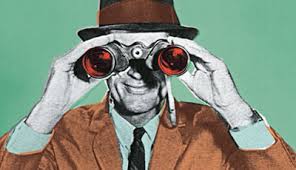

TALENT IDENTIFICATION
Any sport should have standard motor ability and specific skill tests to assess the fitness level of the sports persons and their aptitude for the particular sport. Talent identification is the fundamental & integral part of the selection of the sportsperson before embarking on sustained & scientific training to bring him to peak performance.
Talent identification with universally accepted standards originated in East Europe in the late sixties. It is now an established fact that talent identification is of utmost importance for superior performance in any sport. Scientific approach in talent identification in Kabaddi is a fairly new concept. The prerequisites for talent identification tests in Kabaddi as in any other sport are objectivity, reliability, validity and arriving at specific norms.

Before administering the talent identification tests for valid and reliable results, attention to details is very important, such as the selection of the tests, adequate testing personnel, availability of equipment & materials, preparation of scorecards with date of testing, quick and accurate scoring, prior training of the testing personnel, demonstration, warming up, motivation, and last but not the least adequate safety measures. Several talent identification tests have been devised for assessing the potential of sportspersons in Kabaddi such as Footwork test - to measure agility, speed, coordination & basic footwork, Reaction ability test – to measure reaction ability & skill, Raiding skill test – to assess the raiding ability, Hand touch reach test – to measure the reaching ability and stretching capacity, Foot touch reach test – to measure flexibility and reach of the legs, Raiding [offensive] skill test with cant- to measure raiding ability & cant etc,………………….
A MODEL BATTERY OF TESTS TO EVALUATE A KABADDI PLAYERS
-
Age
-
Height
-
Weight
-
Hand length
-
Leg length
-
General & Specific Physical Fitness Tests for Kabaddi Players: 20%
-
Grip Strength Test (Grip Dynamometer) – 2 to 3 repetition suggested
-
Sit Ups (Core/Abdominal) – Within one minute & Maximum number counted
-
15 meters/30 meters Dash – Standing start for speed and reaction ability
-
6x10 Shuttle Run – Agility and coordinative ability
-
Standing Broad Jump – Back strength and explosive power
-
Bend and Reach – Flexibilityl
SKILL TESTS: 20%
-
Hand Touch Reach Test
-
Leg Touch Reach Test
-
Footwork test
-
30 SECONDS Raiding skill test
-
8 x 6 defence Footwork movement test (shuttle run with specific moves)
Game Performance Analysis: 50%
-
Positional play
-
Individual Skills
-
Supporting ability
-
Tactical play/Raiding ability
-
Confidence (Psychological abilities & team coordination)
|
No
|
Name
|
Position
|
Individual
Skills
10
|
Supporting ability
10
|
Raiding ability
10
|
Positional play
10
|
Psychl
Fitness
10
|
TOTAL SCORE
|
Remarks
|
|
|
|
|
|
|
|
|
|
|
|
|
|
|
|
|
|
|
|
|
|
|
|
|
|
|
|
|
|
|
|
|
|
|
|
|
|
|
|
|
|
|
|
|
y
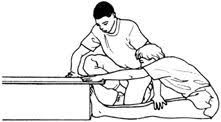



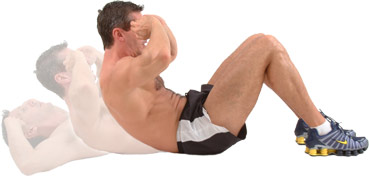

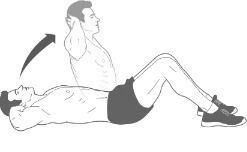
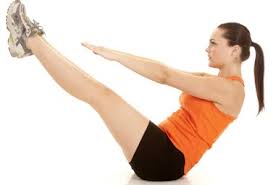

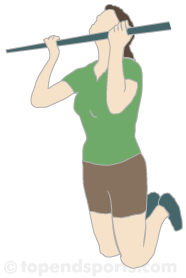
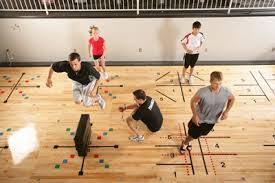

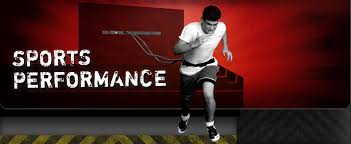
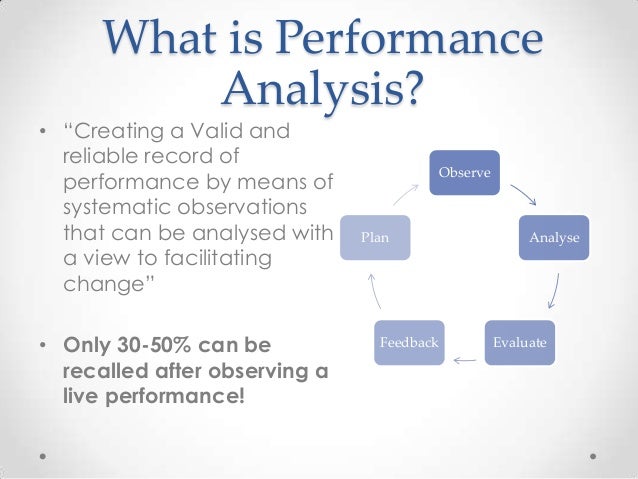
Analysis of the performance of the individual player and the team as a whole during practise sessions as well as during the competition is an integral part of the training of the team. Any team however well trained is bound to commit a few mistakes which may have telling effects on the teams’ performance.
The team that commits fewer mistakes generally ends up winning the competition. Careful analysis of the teams’ performance will equip the coach with the required feedback to correct the mistakes and ensure that the same mistakes are not committed in the next competition. Analysis of the performance of the opponent team is also essential since this will help the coach and players prepare various strategies to win. The coach focuses on the weak points of the opponent team and designs tactics to suit every conceivable situation.
Scouting is a tool to analyse the opponent teams’ performance. The scout, who is the person who observes and collects the required information, should be equipped with thorough knowledge of the technicalities and rules of the game so that his analysis turns out to be accurate and dependable on the basis of which strategies and tactics could be prepared
Video Analysis
Video analysis, once considered a tool only for the biomechanist or high-performance coach, is now becoming a technology used by many coaches working with athletes of all ages and standards. There has been an enormous growth in video-analysis software, which has allowed the coach to improve their qualitative technical and performance analyses to their athletes. However, for many coaches, particularly the majority who may not be IT savvy, video analysis may appear threatening rather than friendly. Moreover, the technology may be more detailed than one might think to get started.
Video has many applications in sports and science. Coaches and athletes are using the medium more and more to measure and correct technique, and to analyze team and individual performances. Video analysis software can also be used for gait analysis and biomechanics research, and in injury rehabilitation.
Team Performance Analysis
With the correct software, video of match play can become much more useful than simply re-watching the game. First it requires a technician to mark the video (in real time or after the game) with your chosen key points such as Touches, Catches, Struggles, Bonus points, Super catches or raids, errors, and specific plays, and also mark the involvement of each player. The coach or player then has ability to filter and see their chosen aspect of the game by a specific player, or errors by the opposing team. Game highlights can be quickly generated, and you have instant access to many aspects of performance.
Technique Analysis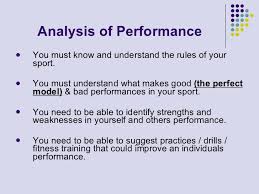
Video analysis of technique is very useful for identifying and correcting problems with an athlete's technique. Things that can be measured and identified using video analysis include the following:
-
Execution of a Technique and its fallow through action
-
Body position during technique performance.
-
Joint and segment angles and velocities.
Camera & Equipment
Digital video cameras are essential in video analysis, and with the technology being so prevalent, digital video cameras are now relatively inexpensive. Your camera must be able to interface with the computer, so make sure you also have a video capture card and fire wire cable to feed into the computer.
Consider whether you will set up the camera in a fixed position (on a tripod) or operate it by hand. In most cases having a fixed camera position is preferable, as it allows for an aspect of the technique to be fully observed and analysed (such as the foot plant during running cycle). Further, it allows you to coach at the same time as you are analysing (for example, coaching and analysing a tennis backhand stroke). A good software package should have a functional remote controller that allows freedom of movement and coaching while the video records (you can place the tripod where normally you would be standing). Of course, not all sports analyses can be effectively conducted with a fixed camera; sometimes the coach needs to see the whole skill performed, not just one part of it.
 The positioning of the camera is also important. Most analyses are conducted from the side, but similar to coaching, observation must come from different angles, so make sure you position the camera at various angles to capture all movements (even on non-dominant sides for asymmetrical sports such as the racket sports). For coaches who are fortunate enough to obtain two cameras, some software programs are able to take dual-incoming feeds that provide simultaneous observation from different angles.
The positioning of the camera is also important. Most analyses are conducted from the side, but similar to coaching, observation must come from different angles, so make sure you position the camera at various angles to capture all movements (even on non-dominant sides for asymmetrical sports such as the racket sports). For coaches who are fortunate enough to obtain two cameras, some software programs are able to take dual-incoming feeds that provide simultaneous observation from different angles.
The coach should also be aware of environmental influences. Consider the direction of sunlight, shadows from trees or buildings; or if indoors, how to compensate for the lower levels of light. For sports played on sprung floors, movement from the athletes can give the camera the ‘jitters’, affecting the quality of the capture.